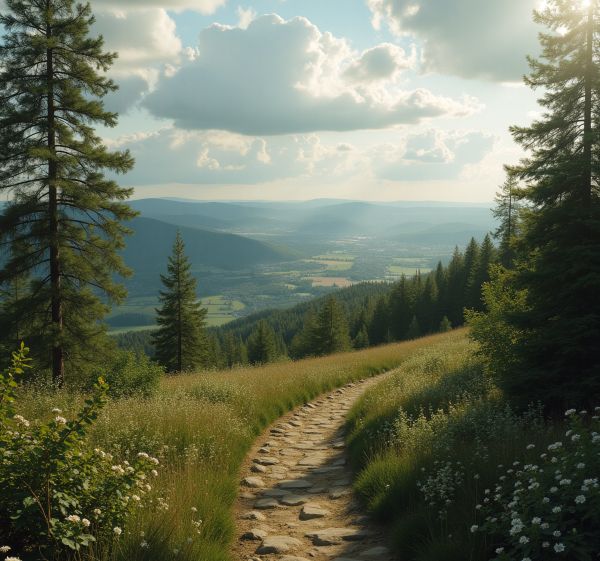Friday, June 13, 2025
The Rise of Fantasy-Fueled Exploration
In recent decades, the travel landscape has undergone a quiet but powerful transformation. A growing number of global adventurers have been setting out not just to explore the world—but to walk in the footsteps of the mythical and magical. One destination that has captivated imaginations like few others is the world of Narnia, made famous by the writings of C.S. Lewis and brought vividly to life in the film adaptations released between 2005 and 2010.
Since those films debuted, travel professionals around the world have noticed an increase in interest for destinations tied to fantasy narratives. What started as a niche interest has evolved into a full-blown movement, where visitors seek more than just scenery—they search for the wonder they first felt as children. This kind of emotional connection has led to steady tourism booms in select locations across the globe.
From Fiction to Footfall: Shaping Tourism with Fantasy
Tourism officials in countries like New Zealand, the Czech Republic, and Slovenia gradually began adjusting their promotional strategies to embrace this rising wave of cinema-inspired travel. As the Narnia series continued to enchant viewers, these regions capitalized on the unique visual charm of their landscapes, now synonymous with the magical realm Lewis imagined.
Among the key changes observed:
A notable rise in international visitors since the mid-2000sIncreased demand for guided tours focused on filming spotsA surge in interactive and narrative-based travel experiences
Tour analysts were quick to recognize that fantasy tourism was not just a fleeting trend. Its appeal lay in offering an immersive story—one that people didn’t just watch but could now live out through travel.
Turning Fantasy Landscapes into Real Destinations
The Chronicles of Narnia films—The Lion, the Witch and the Wardrobe, Prince Caspian, and The Voyage of the Dawn Treader—transported millions into a world brimming with mythical creatures, epic battles, and majestic settings. Yet what captivated audiences on screen were, in fact, real locations, chosen for their natural beauty and atmospheric presence.
New Zealand was a standout, offering vast wilderness and dramatic coastlines that portrayed regions such as the River Shribble. Its pristine fjords, particularly in Milford Sound, gave a visual scale and depth that felt truly otherworldly.
In the Czech Republic, Gothic architecture and wintry landscapes helped bring the White Witch’s Castle to life. The eerie aesthetic of these ancient structures was enhanced with subtle effects, blending historical reality with magical fiction.
The iconic Lantern Waste, a peaceful forest where Narnia first opens to many of its visitors, drew inspiration from the southern English countryside. The rolling hills and ancient woods of this region mirrored Lewis’s own childhood surroundings, making it a personal yet universally appealing touchpoint.
Notably, these filming locations were chosen not only for their beauty but for their timelessness—places untouched by modern clutter, where imagination could easily take root.
Mapping Imagination onto Earth
Fans, scholars, and casual travelers alike have traced C.S. Lewis’s inspirations back to specific real-world geographies. This literary cartography has given rise to pilgrimages of sorts, where people embark on journeys not only for leisure but for a deeper connection to stories that shaped them.
Examples of these real-world counterparts include:
Lantern Waste ➝ Southern EnglandWhite Witch’s Castle ➝ Czech RepublicRiver Shribble ➝ New Zealand’s Milford Sound
By anchoring Narnia’s fantasy in real-world locations, the films created a bridge between narrative magic and tangible experience—a gift to both tourism and the imagination.
Beyond Sightseeing: A Journey of Meaning
Experts in tourism and literary studies have observed that Narnia’s enduring influence is not solely because of its dramatic visuals. Rather, it lies in its core themes: bravery, hope, friendship, and the struggle between good and evil. These universal values, conveyed through fantasy, leave a lasting impact on those who visit the places behind the stories.
Some locations fans most frequently explore include:
Cair Paravel – representing royalty and redemptionAslan’s How – a place of sacrifice and spiritual renewalTashbaan – a cultural metropolis brimming with vibrancyThe Wood Between the Worlds – a place that connects alternate dimensions
Travelers often report their visits to these places as deeply emotional—a return not just to favorite scenes, but to personal memories and dreams once thought lost to childhood.
Looking to the Horizon: Fantasy as the Future of Travel
Industry forecasts now suggest that fantasy-based travel will continue to shape travel decisions, particularly among younger generations. Millennials and Gen Z, more inclined toward experience-driven tourism, are increasingly seeking destinations with emotional or narrative depth. Combined with growing interest in sustainable and nature-based travel, fantasy destinations like Narnia offer an ideal balance of aesthetic wonder and eco-conscious appeal.
By choosing to visit such places, travelers aren’t just escaping the real world—they’re engaging more fully with it, informed by stories that taught them to dream, hope, and explore.
Timeless Realms in the Modern World
Although Narnia was born from the imagination of a writer, the landscapes that give it shape are unmistakably real. From the lush English meadows to snowy European fortresses, and from wild New Zealand fjords to sacred storytelling spaces, these locations continue to offer travelers a rare chance: to step into a living myth.
In today’s world, the gateway to Narnia may no longer be hidden behind a wardrobe—but it certainly still exists. All one needs is a sense of wonder and a map that leads not just to places, but to the stories within them.
